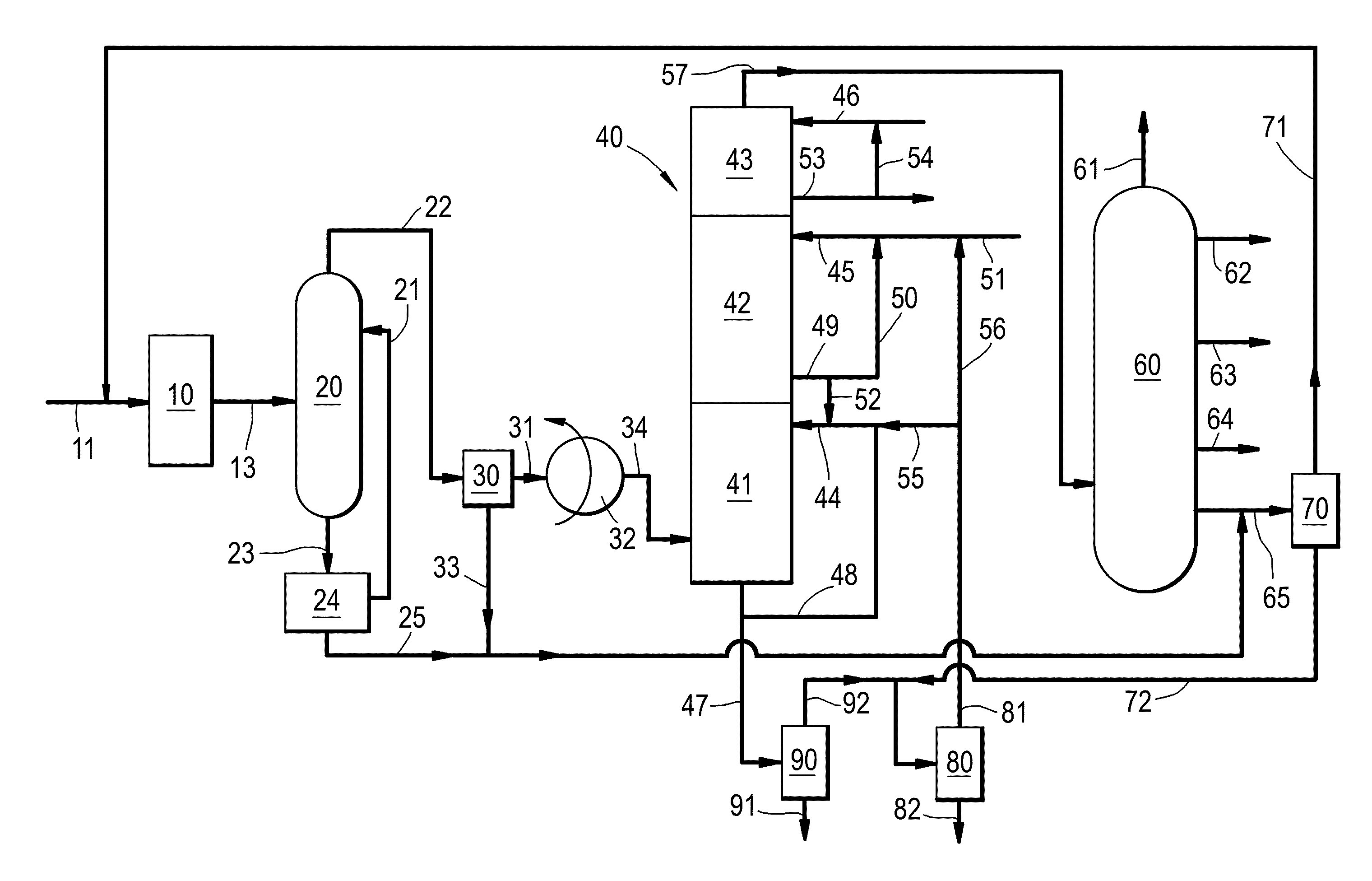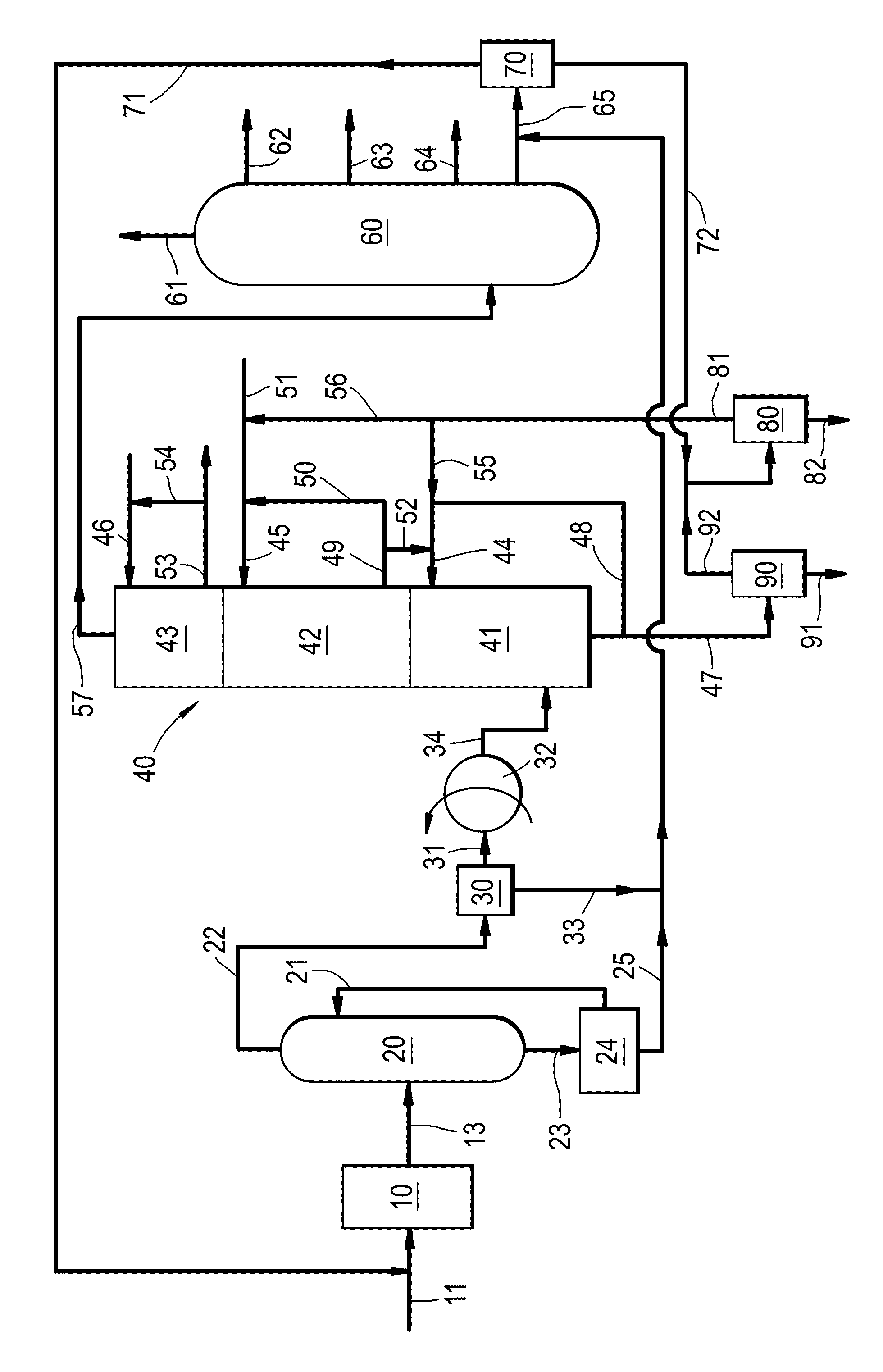Process for the preparation of an olefinic product from an oxygenate
a technology of oxygenate and olefinic product, which is applied in the direction of hydrocarbon from oxygen organic compounds, chemistry apparatus and processes, and organic chemistry, etc. it can solve the problems of unreacted sulphite and bisulphate addition compounds being treated in the effluent treatment system of the oto process, and the proportion of oxygenates such as methanol may unavoidably decompose thermally or catalytically into oxides of carbon,
- Summary
- Abstract
- Description
- Claims
- Application Information
AI Technical Summary
Benefits of technology
Problems solved by technology
Method used
Image
Examples
Embodiment Construction
[0016]In the process according to the invention, an olefinic product comprising ethylene and / or propylene is prepared by first converting the oxygenate into olefins in a so-called oxygenate conversion step (step a)) to produce an effluent comprising olefins, water, carbon dioxide and carbonyl compounds including C2+ aldehyde and / or ketone. In step b), water is separated from the oxygenate conversion effluent to obtain a water-depleted gaseous oxygenate conversion effluent comprising olefins, carbon dioxide and C2+ aldehyde and / or ketone. In subsequent step c), the water-depleted gaseous effluent obtained in step b) is compressed to obtain a compressed gaseous stream comprising olefins, carbon dioxide and C2+ aldehyde and / or ketone. In step d), carbon dioxide and other acids are separated from the compressed gaseous stream by subjecting the compressed gaseous stream to a caustic wash treatment, wherein the gaseous stream is countercurrently contacted with a caustic solution. In or...
PUM
| Property | Measurement | Unit |
|---|---|---|
| temperature | aaaaa | aaaaa |
| temperature | aaaaa | aaaaa |
| temperature | aaaaa | aaaaa |
Abstract
Description
Claims
Application Information
 Login to View More
Login to View More - R&D Engineer
- R&D Manager
- IP Professional
- Industry Leading Data Capabilities
- Powerful AI technology
- Patent DNA Extraction
Browse by: Latest US Patents, China's latest patents, Technical Efficacy Thesaurus, Application Domain, Technology Topic, Popular Technical Reports.
© 2024 PatSnap. All rights reserved.Legal|Privacy policy|Modern Slavery Act Transparency Statement|Sitemap|About US| Contact US: help@patsnap.com









